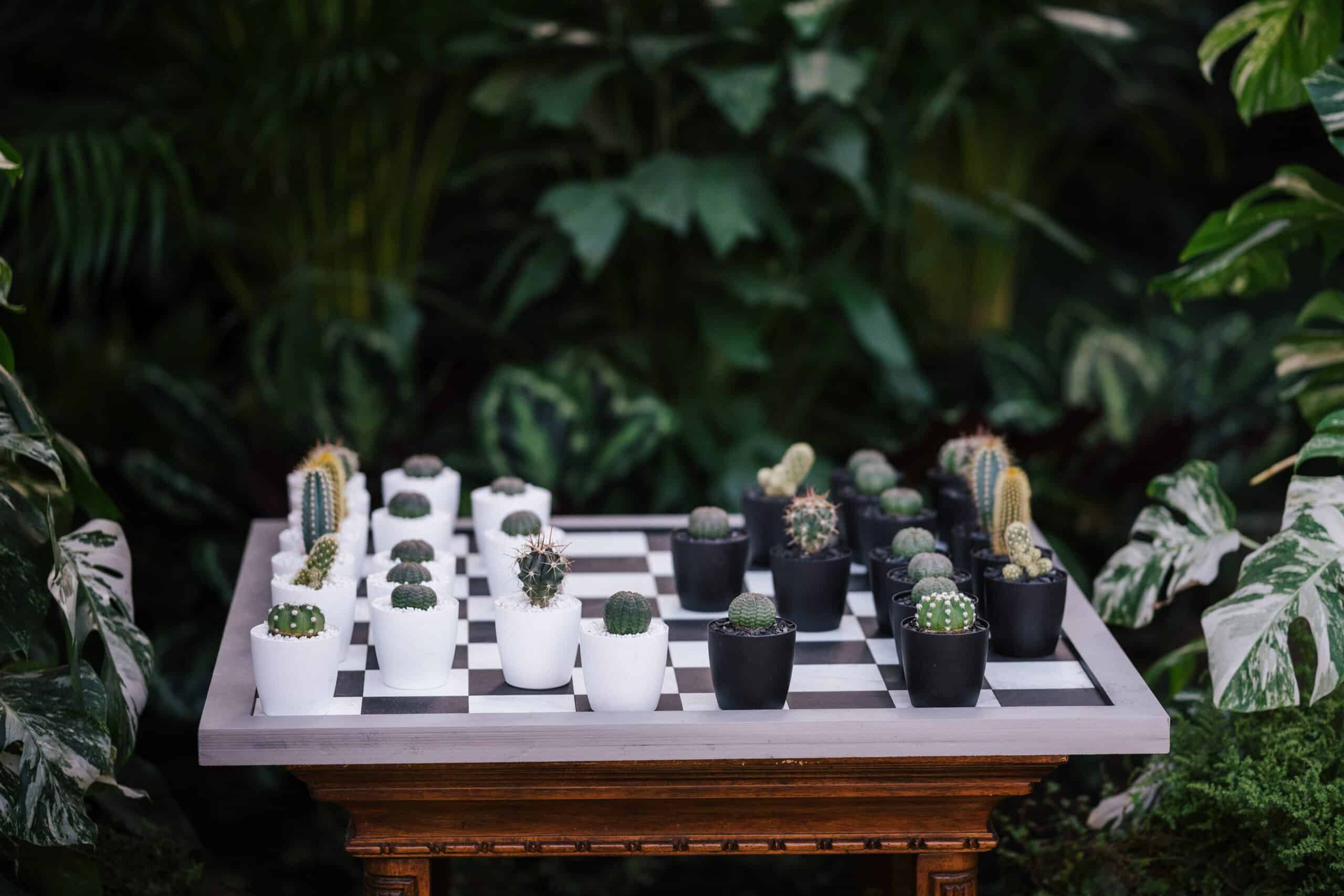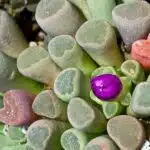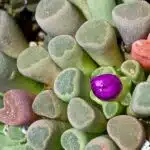Low-maintenance succulents are the perfect addition to any outdoor garden. They require minimal maintenance and come in a variety of shapes, sizes, and colors. For those who are new to gardening, or have limited time to devote to their outdoor space, low-maintenance succulents provide an ideal solution for adding life and vibrancy to the landscape. Take for example one of our clients who had a small porch area with limited sunlight; with just a few hardy succulent varieties they were able to create a vibrant oasis that was easy to care for.
Succulents can be found in almost every type of climate and therefore can give you many options when it comes to choosing what kind of plants work best in your space. Whether you’re looking for shade tolerant species or sun loving varieties, there is something out there that will suit your needs. Succulents are also incredibly versatile; they can be used as ground cover or planted in containers and hanging baskets, making them ideal for all types of spaces.
By selecting the right succulents and providing them with adequate water and light requirements, you can ensure that your outdoor space remains lush and vibrant all year round with minimal effort required from you. In this article we will look at some of the best low-maintenance succulents available so that you can find the perfect plants for your outdoor space without having to put too much time into their upkeep.
What Are Succulents?
Succulents have become a coveted addition to any garden like a shimmering oasis in an arid desert. As water-retaining plants, succulents are ideal for outdoor gardens that require minimal maintenance. To better understand what succulents are and how they can benefit any outdoor garden, let’s dive into the world of these remarkable plants.
At their core, succulents are hardy plants that store moisture in their leaves or stems. This allows them to thrive even in hot, dry climates where other plants may not survive. Additionally, many types of succulent are drought-resistant, meaning they don’t need frequent watering or fertilization to stay healthy and vibrant. Some succulents even produce striking flowers!
In terms of aesthetic appeal, succulents come in a variety of shapes and colors which can add depth and texture to any outdoor garden. With a wide selection of species available at most nurseries, it’s easy to find something that will fit perfectly into your landscaping design plan. Plus, since they require very little care and attention, you won’t have to worry about constantly tending to them!
From their low-maintenance requirements to their aesthetically pleasing nature, there is no denying the benefits of adding succulents to your outdoor space. So whether you’re looking for a pop of color or just want an easy way to spruce up your yard without spending too much time or money on maintenance–succulents may be the perfect solution for you!
Benefits Of Growing Succulents Outdoors
Growing succulents outdoors is like tending a garden of precious gems. The plants glimmer in the sun, absorbing its energy to create a beautiful display of vibrant colors and textures. But the benefits of growing these jewels of nature extend beyond just aesthetics. They offer a low-maintenance approach to gardening that can help bring life to any outdoor space.
For starters, succulents are hardy plants that don’t require much maintenance or water. This makes them ideal for areas with limited access to water, such as balconies and decks. They also require little fertilizer and thrive in full sun or partial shade, allowing them to be planted almost anywhere in your garden. In addition, succulents are more resistant to disease than many other types of plants, making them easier to care for over time.
Finally, because of their low-maintenance requirements and drought-tolerant nature, succulents can help reduce your impact on the environment by conserving water. Not only will you be helping the planet but you’ll also be able to enjoy the beauty these plants bring wherever they are grown. With their low-care needs and stunning visual appeal, it’s no wonder succulents are one of the most popular outdoor plants around!
Types Of Low-Maintenance Succulents
Growing succulents outdoors is like a journey of discovery. It’s a way for us to explore the beauty of nature, while also learning about the different types of plants that thrive in our environment. As we venture through this exploration, we come across various succulents that require minimal maintenance and care—the perfect candidates for outdoor gardens.
These low-maintenance succulents may be less obvious than their counterparts, but they are just as impressive and resilient when it comes to surviving harsh conditions. Most are drought-tolerant, which means they need little water once established; while some prefer full sun while others can handle partial shade. They come in an array of shapes and sizes, from ground covers and trailing vines to tall trees and cacti.
No matter what type you choose, you’ll find that these hardy plants can be enjoyed year-round with minimal effort on your part. Whether you’re looking for something to spruce up a patio or create a unique landscape feature in your garden, there is sure to be a low-maintenance succulent perfect for the job. With so many options available, there is no limit to the creative possibilities for your outdoor space!
The Best Succulents For Outdoor Gardens
When it comes to gardening, succulents are a great addition for those looking for low-maintenance plants. Not only are they durable and resilient, but they also come in a variety of shapes and sizes. In this section, we will explore the best succulents to plant in outdoor gardens.
When selecting succulents for outdoor gardens, it is important to consider their environment. Succulents can thrive in sunny, dry spaces with well-draining soil and plenty of air circulation. Some of the most popular varieties include aloe vera, sedum rubrotinctum, hens and chicks, and agave americana – all of which require little care once established.
One type of succulent that does particularly well outdoors is sempervivum tectorum – also known as houseleeks or hen-and-chicks. This hardy has shallow root systems and thick leaves that store moisture during dry periods – making it ideal for gardens with poor draining soil or less than optimal sunlight levels. Additionally, these succulents have an attractive rosette shape that adds visual interest to any garden bed.
In order to ensure your succulent plants thrive in their new home, you’ll need to prepare the soil before planting them. Loosening the soil with a shovel while adding organic matter such as compost or manure will help create an environment where the plants can grow healthy roots…
Preparing Soil For Succulents
Preparing soil for succulents is an essential part of creating a vibrant and healthy outdoor garden. In order to ensure the best possible environment for these low-maintenance plants, it is important to understand the basics of preparing the soil in advance. Here are five key steps for preparing soil for succulents:
Start by assessing your soil type. This will help you determine how much organic material and other amendments you need to add in order to create a suitable environment for your succulent plants.
Test your soil’s pH levels. Succulents prefer slightly acidic soils, so you may need to adjust accordingly if your testing results show a higher pH level.
Next, work on adding organic material such as compost or mulch into the existing soil. This will help improve drainage and aeration while also providing essential nutrients that succulents need to thrive.
Once the necessary amendments have been added, it is time to mix them into the existing dirt using a garden tiller or shovel. This should be done thoroughly in order to ensure an even distribution of all materials throughout the area where you plan to plant your succulents.
Lastly, make sure that you water properly once all planting has been completed. Succulents require less water than most other indoor plants, so it is important not to overwater them or allow standing water around their roots.
By following these five steps for preparing soil for succulents, gardeners can rest assured that they are creating an ideal environment for their outdoor plants and ensuring that they remain healthy and vibrant throughout the growing season and beyond. As we move forward with our project of creating an outdoor garden with succulents, selecting a suitable species is our next step.
Selecting A Succulent For Your Outdoor Garden
Choosing the right succulent for your outdoor garden is like putting together a beautiful jigsaw puzzle – you want to make sure all the pieces fit perfectly! As an expert in botany and gardening, I can tell you that selecting the right succulent for your space is essential if you want it to thrive outdoors. While there are many types of succulents to choose from, there are a few that are especially low-maintenance and ideal for outdoor environments.
When picking out a succulent, look for one with thick leaves and strong stems. These kinds of succulents have adapted to their environment better than thin-leafed varieties, making them less susceptible to damage from wind or heavy rainfall. A sun-loving variety is also recommended as they tend to be hardier and more resistant to disease. Some of the best options include aloe vera, sedum, and agave plants.
Finally, consider how large your chosen succulent will grow before deciding where it should go in your garden. Succulents come in all shapes and sizes, so make sure you have enough room for its full size when mature. This way, you’ll be able to enjoy its beauty without worrying about overcrowding or having to prune it regularly. Planting and caring for outdoor succulents requires careful consideration – but with the right preparation they can be long-lasting additions that provide years of joy!
Planting And Care For Outdoor Succulents
Once you’ve chosen the perfect succulent for your outdoor garden, it’s time to start planting and caring for it. Planting is a relatively simple process that requires minimal effort. All you need to do is pick a spot in your garden with plenty of sunlight and dig a hole slightly larger than the succulent’s root system. Place the plant in the hole, fill it with soil, and gently press down to ensure the succulent is secure.
When it comes to care, outdoor succulents require little maintenance compared to other plants. Water infrequently yet deeply; only when the soil has completely dried out. Overwatering can cause root rot, so make sure you water sparingly! Fertilizing is not necessary but applying a diluted fertilizer once or twice during the growing season may help promote growth and blooming.
Finally, keep an eye on any pests that may try to take up residence in your plant’s pot — such as aphids or mealybugs — as they can cause harm if left untreated. If any pests appear, use an insecticidal soap spray or neem oil solution to remove them quickly and effectively. With proper care and maintenance, your outdoor succulent will thrive!
Climate Considerations For Outdoor Succulents
It may seem counterintuitive, but succulents don’t always require a lot of fuss and care to thrive outdoors. Surprisingly, they can be among the most low-maintenance plants in your garden. So, if you’re looking for a way to bring some life to your outdoor space with minimal effort, succulents could be just the ticket! But before you jump into planting them, let’s take a look at what climate considerations you need to bear in mind.
Temperature is probably the most important factor when it comes to growing succulents outside. Most varieties will do best in temperatures between 50°F and 85°F (10°C – 29°C). If you live in an area with extreme cold or heat, you’ll have to choose succulents that are best suited for those conditions. Some species won’t survive below freezing temperatures and others can suffer damage from too much sun or wind. It’s also important to note that many types of succulents need protection from strong winds, so make sure they’re sheltered in some way if necessary.
Additionally, pay close attention to how much light your succulents get each day. Generally speaking, they need at least 4 hours of direct sunlight to stay healthy and vibrant. However, if the area gets too hot during the summer months (over 90°F/32°C) then it’s best to provide shade for your plants using netting or other materials. With these precautions in place, you should find that your succulents remain happy and thriving throughout the year!
Watering Outdoor Succulents
When it comes to caring for outdoor succulents, proper watering is essential. As a specialist in botany and gardening, I understand the nuances of this delicate plant. To help you make sure your succulents are getting the right amount of water, here are some key points to remember:
Water when the soil is dry. Succulents need more frequent waterings in hotter climates and less frequent waterings in cooler climates. Be sure to check soil moisture levels before deciding whether or not to water your outdoor succulents.
Use a spray bottle for misting your succulents. This allows for more precise application of water without running the risk of over-watering or flooding the roots. Misting also helps keep pests away from your plants.
Keep an eye out for signs of overwatering or underwatering. Overwatered succulents may be droopy, exhibit yellowing leaves, or display signs of root rot; underwatered succulents may have shriveled leaves and feel dry and brittle when touched. Adjust your watering schedule accordingly once you recognize any warning signs.
With these tips, you can ensure that your outdoor succulent plants stay healthy and vibrant! Next up, we’ll discuss fertilizing outdoor succulents – an equally important part of their maintenance regimen.
Fertilizing Outdoor Succulents
As a specialist in botany and gardening, I’m often asked about the best way to care for outdoor succulents. Fertilizing is one important aspect of keeping your succulents healthy and vibrant. In this article, I’ll discuss the best method for fertilizing outdoor succulents.
First, it’s important to understand what type of fertilizer you should use on your succulents. Succulents need a slow-release fertilizer with a balanced ratio of nitrogen, phosphorus, and potassium. Avoid using too much fertilizer as this can damage the plant’s roots. Instead, apply just enough to give your succulent plants a boost without overwhelming them.
Next, consider how often you should be fertilizing your outdoor succulents. Generally speaking, succulents don’t require frequent feedings; once every six weeks or so should be enough to keep them thriving. However, if you’re noticing that your plants are particularly slow-growing or their foliage is looking dull and lifeless, then it may be beneficial to increase the frequency of fertilization.
Finally, when applying fertilizer to your outdoor succulents make sure that you’re doing so in moderation and at the right time of year. During the spring and summer months when growth is most active is the ideal time for feeding your plants; avoid feeding them during fall and winter as this can lead to over-fertilization which can damage their roots. With these tips in mind, you’ll be able to keep your outdoor succulent garden looking beautiful for years to come!
Common Problems With Outdoor Succulents
From their native climates, succulents can be the perfect addition to your outdoor space. But what happens when something goes wrong? It’s important to understand the common problems that can occur with outdoor succulents in order to maintain a thriving garden. Let’s explore what these are and how you can address them.
Most succulents require an environment that is warm and dry, which makes it difficult to keep them healthy outdoors in places with cold winters. If you live in a climate with cold temperatures during the winter months, it’s important to select resilient varieties like aloe vera or jade plant that can tolerate frost and snow. You should also make sure they are well insulated from the weather by placing them inside a pot or container before the temperatures drop.
Another potential issue for outdoor succulents is pests such as mealybugs, scale insects, and aphids. To prevent infestations, it’s best to inspect your plants on a regular basis for any signs of pests or damage. If you do find pests on your plants, treat them immediately with an appropriate insecticide or natural remedy such as neem oil. Additionally, avoid over-watering your plants as this can create conditions that attract pests.
With proper care and maintenance, there’s no reason why your outdoor succulent garden won’t thrive! But understanding some of the common issues associated with growing these plants outdoors will help you ensure their health and longevity for years to come. So take time to learn more about pruning and re-potting succulents so you can enjoy a lush garden filled with vibrant colors all season long!
Pruning And Re-Potting Succulents
When it comes to pruning and re-potting of succulents, there is no greater challenge for the gardening enthusiast. It’s a task that can be daunting, even for the most experienced botanists. But fear not! With a little bit of knowledge and an understanding of the basics, you can make pruning and repotting succulents an easy and enjoyable experience.
First of all, it is important to remember that when it comes to pruning succulents, less is more. You don’t want to over-prune or take too much off in one go as this could damage the plant. Smaller cuts are best, and always try to keep the overall shape of the plant when cutting back stems or leaves.
As for re-potting your succulent plants, this should only be done if absolutely necessary. If you decide that repotting is needed then ensure you use a pot which has enough drainage holes so that excess water can escape. Additionally, make sure you use quality soil designed specifically for cacti and succulents as they have special needs when it comes to nutrients and moisture levels.
The process of pruning and repotting may seem intimidating at first but by taking your time and going step-by-step with care you will soon find yourself masterfully caring for your outdoor succulents with ease!
Common Diseases Of Outdoor Succulents
When dealing with outdoor succulents, it’s important to be aware of the diseases that may affect them. Succulents are vulnerable to certain fungal and bacterial infections, as well as nutritional deficiencies. In this article, we’ll look at some of the most common diseases of outdoor succulents.
The first and most common disease is root rot, which is caused by overwatering or poor drainage. This can occur when the soil remains wet for extended periods of time, allowing fungi to take hold in the plant’s roots. Symptoms include yellowing or wilting leaves, pale discoloration on the leaves, and a soft or slimy texture in the root system. To prevent root rot, make sure your succulents are planted in well-draining soil and water them only when necessary.
Fungal leaf spot is another possible issue for outdoor succulents. This condition is caused by fungi that attack the foliage of the plants and form small spots on their leaves. Symptoms include yellowing, browning, or curling foliage as well as white mold growth on the underside of leaves. To prevent fungal leaf spot from occurring, it’s important to keep your succulents clean and dry while also ensuring they get adequate air circulation around them. Additionally, you’ll want to avoid over-fertilizing your plants since too much fertilizer can increase their susceptibility to this condition.
These are just a few of the most common diseases affecting outdoor succulents; however there are many others out there that can cause similar symptoms if left unchecked. It’s important to inspect your plants regularly so you can identify any potential issues early on before they become more serious problems down the line. With proper identification and treatment methods in place, you should be able to keep your outdoor succulents healthy and happy for years to come!
Propagating Succulents
Propagating succulents is an exciting and rewarding way to expand your collection and share with friends. An estimated 10 million succulents are propagated in the US each year, a testament to their popularity as houseplants. As a specialist in botany and gardening, I’m here to help you understand how to successfully propagate these popular and hardy plants.
The process of propagating succulents is relatively simple and straightforward. Cuttings can be taken from mature plants, allowing them to root quickly and easily. You’ll want to make sure there are enough leaves on the stem you’re cutting so that it can still photosynthesize when placed in soil. Succulent cuttings need bright indirect sunlight and should be kept moist until they develop roots.
To ensure success when propagating succulents, remember that patience is key! It may take anywhere from several days to weeks for the cutting to develop roots. The best way to track progress is by gently tugging on the stem every few days; if it resists being pulled out then chances are it has rooted itself sufficiently! With some care and attention, you’ll soon have plenty of new succulents ready for your outdoor garden or even more containers indoors.
Ready for more? Read on for some tips on growing succulents outdoors!
Tips For Growing Succulents Outdoors
Growing succulents outdoors provides a unique opportunity to enjoy the beauty of nature while taking advantage of the low-maintenance characteristics that succulents are known for. With just a few simple tips, you can easily nurture your succulents and keep them healthy.
To begin with, it’s important to pick the right spot for your succulents – one that is not too sunny or too shady. Succulents prefer bright, indirect light and well-draining soil. It’s also essential to water regularly in order to keep your plants hydrated. Here are some key points to consider when growing succulents outdoors:
• Choose an area that receives bright, indirect sunlight • Provide well-draining soil • Water regularly • Fertilize every two weeks
Finally, be sure to monitor your succulents for signs of pests or disease. If any issues arise, contact an expert for advice on how to treat them safely and effectively. By following these steps, you can make sure that your outdoor succulent garden thrives for years to come!
Frequently Asked Questions
How Long Do Succulents Typically Last Outdoors?
When it comes to low-maintenance succulents that can be grown outdoors, the options are endless. From the iconic aloe vera to the colorful sedum, these resilient plants create a beautiful addition to any outdoor space. But how long do succulents typically last outdoors?
The answer depends on several factors. First and foremost, you’ll want to pay attention to your hardiness zone and whether or not your plant is suited for your local climate. Additionally, the type of succulent matters: cacti tend to have longer lifespans than other varieties. Here’s a quick list of factors that affect the longevity of an outdoor succulent:
- Hardiness zone
- Type of succulent
- Environmental conditions (light exposure, soil quality, water availability)
- Pest infestation
For those living in more temperate climates, many succulents can survive year-round with minimal care and maintenance – especially when planted in a sunny spot with well-draining soil and minimal overwatering! If you’re looking for an easy-to-care-for outdoor plant that can withstand some abuse from Mother Nature, consider investing in some hardy succulents like hens and chicks, echeveria, or sempervivum – all of which are known for their drought tolerance and low maintenance requirements. With proper care and attention, these impressive plants can last for years – sometimes even decades!
Is It Possible To Overwinter Succulents In Colder Climates?
Many garden lovers are asking whether succulents can survive in colder climates and overwinter outdoors. This is an important question, since succulents are highly sensitive to cold temperatures and frost. In this article, we’ll explore the possibilities of overwintering succulents in colder climates.
First off, we should consider the types of succulents that are suitable for growing outdoors during winter. Generally speaking, hardy succulent varieties such as Agave americana, Sedum spurium, and Echeveria setosa are best suited for outdoor winter gardening. These types of plants are able to tolerate cold temperatures down to -20°F (-29°C). With proper care and protection from frost and wind chill, these succulents can survive the winter without any problems.
In addition to selecting hardy varieties for outdoor gardening in colder climates, there are a few other things you should keep in mind when overwintering succulents outdoors. For example, it’s important to protect your plants from strong winds by placing them in sheltered areas such as against walls or under trees or shrubs. You should also be sure to provide your plants with adequate drainage so that water doesn’t accumulate around their roots during heavy snowfalls or rainstorms. Finally, you may want to cover your outdoor succulents with blankets or straw during extreme cold weather events to add an extra layer of insulation.
With proper selection of tough-as-nails varieties like Agave americana and Sedum spurium combined with diligent protection from wind chill and extreme temperatures, overwintering succulents outdoors is possible even in colder regions! So if you’re looking for low-maintenance plants that can withstand the elements all year round, give these amazing beauties a try!
What Is The Best Way To Protect Succulents From Pests And Diseases?
Succulents, with their beautiful colors and resilient nature, are a great addition to any garden. But they require some extra protection from pests and diseases if they are to thrive outdoors. As a botanist and gardener, I have seen firsthand how proper pest and disease control can make all the difference in a succulent’s success.
To illustrate this point, I once had an outdoor cacti that was plagued by mealybugs. It was nearly destroyed by their presence until I applied an insecticidal soap to the plant. That simple step reversed the damage done by the pests and ultimately saved the plant from destruction.
When it comes to protecting succulents from pests and diseases, prevention is key. Regular inspection of plants for signs of infestation or infection is essential for keeping them healthy. If you do spot something suspicious, take action quickly by applying appropriate treatments such as insecticides or fungicides. Additionally, planting different species of succulents together can help reduce the spread of disease between them since many organisms tend to target specific varieties of plants.
By taking these proactive steps, you can ensure that your succulents will stay healthy for years to come and become an integral part of your garden landscape!
What Is The Difference Between Indoor And Outdoor Succulents?
Much like a beacon in the night, succulents beckon gardeners to explore their world of fascinating beauty and diverse characteristics. While both indoor and outdoor succulents share some similarities, there are distinct differences that set them apart from one another. With a keen eye for detail and a flair for botany and gardening, we can uncover the secrets that distinguish these unique plants.
At first glance, one may assume that indoor and outdoor succulents are much the same. However, with further exploration into the wonderful world of succulents, it becomes apparent that certain features make each type well-suited to its intended environment. Outdoor succulents typically have thicker leaves than their indoor counterparts – this helps protect them from extreme temperatures and harsh weather conditions they may encounter while growing outdoors. On the other hand, indoor succulents often require more protection from pests and diseases due to their more delicate nature.
It’s also important to note that many outdoor succulents boast a vibrant array of colors, which is what makes them such popular additions to gardens. This increased level of color is due to their exposure to the elements; when grown indoors, most succulents maintain a less intense hue or lack luster altogether. In addition, some species of outdoor succulent thrive best in partial shade or direct sunlight whereas others need more sheltered environments – it pays to do your research before planting any kind of succulent!
When considering whether an indoor or outdoor space would be best for your next gardening project, consider carefully which type of succulent would be most suitable for your needs – as each variety will bring its own unique beauty and character to your home or garden!
Are Succulents Easy To Propagate?
It is often assumed that succulents require a lot of effort to propagate. However, the truth is that propagating succulents can be relatively easy and rewarding. As an experienced botanist and gardener, I can confirm that propagating succulents from cuttings or leaves is typically straightforward and requires minimal maintenance.
To start, you will need a few essential supplies such as a sharp knife or scissors to take a cutting, potting mix, and some pots. Afterward, simply place the cuttings into the potting mix, water them lightly every few days, and keep them in indirect sunlight. The propagation process will be complete in about two weeks; after this time you should have some healthy new succulents ready to plant outdoors!
I understand if you are sceptical of how easy it is to propagate succulents – there are many variables which can affect success rate. But with just a little bit of preparation and care, anyone can grow their own succulent plants with ease! The satisfaction of seeing your hard work come to fruition is worth it in the end. Plus, you’ll be able to enjoy your new low-maintenance outdoor succulents for years to come!
Conclusion
The possibilities for outdoor succulents are endless. With the right care and maintenance, these plants can bring so much beauty and life to any outdoor space. Succulents are incredibly easy to propagate, making them a perfect choice for any gardener looking to create a stunning landscape without spending an arm and a leg.
For those living in colder climates, overwintering is possible with the proper precautions taken. Not only will this keep your succulents alive during the winter months, but it will also ensure they come back in full force come springtime. Pest and disease prevention is key when growing succulents outside – a simple spray of insecticide or fungicide can mean the difference between a thriving garden and one that’s barely surviving.
In conclusion, succulents are not just low-maintenance plants; they’re practically superhuman! Anyone can grow these incredible plants outdoors with ease, creating an oasis that would make even the gods jealous. With their vibrant color and sculptural forms, these hardy little gems can turn any yard into an absolute paradise – no green thumb required!





























